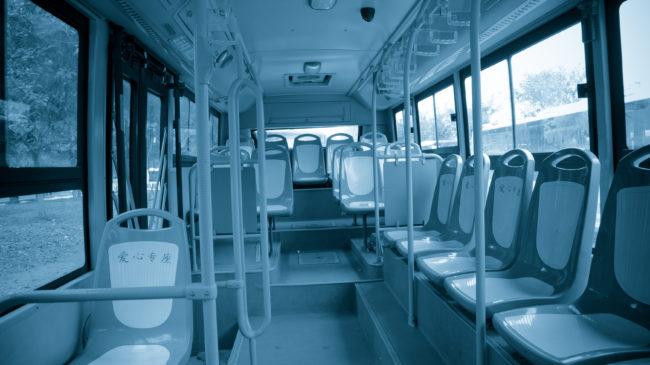Amid widespread calls to make criminal justice reforms and reduce police funding, many in the general public seem to have joined those who note that simply increasing government spending does not directly produce better policy outcomes. Mass transit agencies are another example of where spending has become disconnected from outcomes.
Over the last 20 years, mass transit agencies have spent hundreds of millions of taxpayer dollars on expensive rail capital projects intended to attract higher-income individuals to use mass transit. Meanwhile, lower-income, bus-dependent transit riders have suffered service and route cuts. Unfortunately, transit planners have effectively bifurcated low-income and high-income riders.
There are ways to address this issue going forward. City officials who are committed to social justice should consider ending mass transit agency monopolies and promote a variety of options, including jitneys, which provide better service and are often a venue for minority entrepreneurship.
Jitneys are privately-owned, small shuttle buses that do not adhere to published schedules or routes and function more like a ridesharing service.
Jitneys are most effective in urban and dense suburban areas and provide valid competition to public transit by offering more frequent service at lower costs in high-demand corridors.
The jitney buses of Northern New Jersey are private, largely unregulated, and provide frequent and inexpensive service in predominantly low-income and minority communities. According to the state’s Department of Transportation (DOT) Safety and Fitness Electronic Records, North Jersey is home to at least 494 jitney buses that travel a cumulative 2.3 million miles each year. At peak times, over 1,200 people ride jitneys each hour, paying between $1.50 and $5.50.
One of the more popular routes connects Paterson, New Jersey, to the George Washington Bridge Bus Station in Manhattan. Jitney headways (the time between vehicles arriving to pick up passengers) average two-to-five minutes, though some routes having headways of less than one minute.
On similar routes, NJ Transit’s, which runs New Jersey’s public transportation system, headways are 15-to-30 minutes and passenger fares range from $1.60 to $8.00.
With the average American working 260 days a year, it costs approximately $650 more to take a NJ Transit bus from Paterson to New York City than it would to take a jitney through the year. While NJ Transit offers more discount pass options than jitneys, many lower-income individuals cannot afford the large lump sum needed to purchase those passes.
Beyond costs, jitneys are integral in providing transit for underserved and overlooked communities, connecting largely minority communities with major job centers. NJ Transit provides some of this service but does not provide the frequency needed for those who lack a driver’s license and/or car.
Unfortunately, some politicians often cast aspersions on jitneys. Paterson Councilwoman Vera Ames even “referred to jitney buses as cockroaches,” according to a report by News12 New Jersey.
Cities and states allow the private sector to compete in delivering service. Policymakers should also avoid placing undue regulatory barriers on jitneys and other private-sector transit efforts. For example, governments often use permit fees—set far above associated administrative costs—and strict insurance requirements that far exceed what is needed or dictated by the market. Jitney operators in North Jersey, for instance, cite insurance costs as one of their largest costs. Governments should not exacerbate that issue. Additionally, medallion programs, which restrict the number of jitneys, decrease competition and should also be avoided.
As demand for business and personal travel fluctuates due to the coronavirus pandemic and governments deal with massive budget challenges, cities and states should allow private transit options to serve customers. Private jitneys are more responsive and more in tune with the needs of the communities they serve than many government transit agencies and may thrive if governments stop creating obstacles for them.

